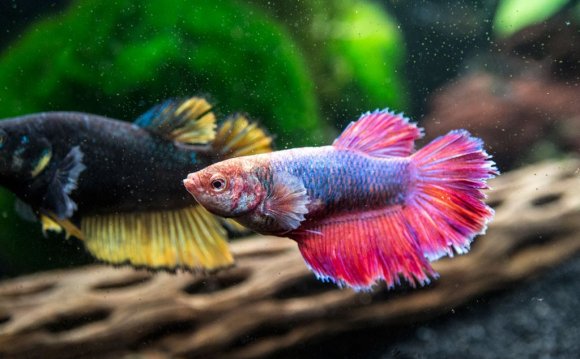
Filtration is a vital part of any home aquarium. It allows maintainance of a healthy aquatic environment for the tank inhabitants and keeps the tank aesthetically pleasing to the viewer. There are many different types of filtration systems that can be utilized in the home freshwater aquarium, each with their own benefits and drawbacks.
Types of Filtration
Aquarium filtration can be broken down into 3 main catagories: Biological, Chemical, and Mechanical. Mechanical filtration is basically the physical removal of particles from the water column. Often this is accomplished by moving water through a mesh or sponge which traps the particles for removal later. Chemical filtration is the absorption of chemicals from the water by use of some form of absorptive media, such as activated charcoal. Biological filtration is the removal of nitrogenous waste by way of nitrofying bacteria and the nitrogen cycle.
Mechanical Filtration
As stated above, mechanical filtration is the phsyical removal of particles from the water itself. These particles can be everything from leftover food and algae to fish feces. With good water flow, this method of filtration can quickly clear the water of debris. However, the drawback is debris will remain trapped in the filter and continue to be exposed to the water until it is manually removed by the aquarium keeper. Organic debris will continue to break down while in the filter and release ammonia into the aquarium. Because of this, it is important to clean these filters regularly.
Not a lot of variety exists when it comes to mechanical filtration options. All basically consist of some sort of porous mesh or sponge used to trap debris. These work best when positioned before the other types of filtration to prevent those from becoming clogged with debris.
Chemical Filtration
Probably the most commonly used type of chemical filtration in freshwater aquariums is activated carbon. Activated carbon absorbs noxious chemicals and dyes from the water keeping the water clear. Ammonia absorbing media is also found on the market, but is utilized less frequently due to the more efficient removal of ammonia that can be accomplished by a healthy biological filter. Chemical filter media requires replacement over time as it reaches it's absorption capacity. Typically every 4-6 weeks, depending on the filter size, water chemistry, and the stocking density of the pond. Follow the manufacturer's recommendations when using these products.
Biological Filtration
It should be said that one does not need to own a specific biological filter to have one in their aquarium. As biological filtration is a natural process caused by nitrifying bacteria, all surfaces within the aquarium become part of this filter once an aquarium becomes established. Bio-filters more so expand the over-all population of these good bacteria within the aquarium system by provided plenty of space and aeration to allow them to flourish.
Probably one of the oldest forms of bio-filters on the market is the Under-Gravel Filter. This consists of a plastic grating that is positioned under the aquarium substrate (gravel) with two long clear tubes that extend from the grating up to close to the water's surface. Water is moved through the gravel, then through the grating and up those tubes by way of either air hoses and airstones or powerheads. This filter utilizes the substrate itself as the bio-filter media. The drawbacks of this type of filter is that it limits the amount of surface area only to the gravel that you have in the tank and the grating quickly becomes clogged with debris as there is no mechanical filter to pre-filter the water before it passes through the substrate. Frequent and thorough vacuuming of the substrate is required to maintain this type of filter. This type of filter often only succeeds in aquariums with very low stocking densities due to their limitations and have fallen out of style with the invent of newer, more efficient options for biofiltration.
A popular option, especially in smaller compact aquariums, is the use of a highly porous sponge for a bio-filter. However, if no mechanical filtration exists prior to this filter, it takes on the double duty of both biolofical and mechanical filter suffering the same fate as any mechanical filter does - becoming clogged. Regular cleaning in necessary. Often these types of filters have multiple separate sponges in them to allow you to alternate cleaning one sponge at a time since the act of cleaning these sponges destroys the beneficial bacteria you are trying to grow.
Bio-wheels are great biological filters and started becoming very popular in the mid-90s. These oncorproate a rotating paddle-wheel made out of porous mesh suspended at the top of an over-flow filter or waterfall spout. As the wheel rotates it dips in and out of the water, keeping the mesh moist and at the same time exposing it to air. Since nitrifying bacteira require air for growth, these wheels develop large healthy colonies of bacteria. Care should be taken to make sure the wheel stays turning, however. If the wheel stops turning the bacteria left high and dry die off.
Bio-balls are a very popular option for bio filtration. These are plastic balls with a large surface area to allow for colonization of bacteria. They can be used in either a canister filter or in a wet-to-dry filter. As long as they don't get clogged with the buildup of debris they work very well.









